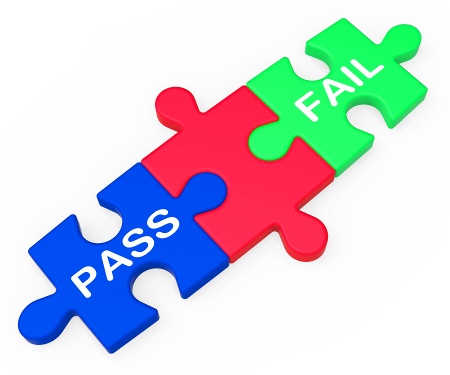Where can I find Certified Agile Tester (CAT) Exam sample questions?
Might this be a question you've been asking yourself lately? Well then, you're in luck, for you happen to be at just the right place.
This article will effectively answer that question and much more. The Certified Agile Tester Course is organized by the International Software Quality Institute (ISQI) of Germany.
Unlike most of the Testing Certifications such as ISTQB and the like whereby the course material is normally prepared by the training institutions involved, with the Certified Agile Tester, the material is prepared by the ISQI itself.
This, in turn, means that no matter where you're sitting the exam, the course material will be the same for all the course takers.
The course material the International Software Quality Institute will provide you with will have everything you need, from the Agile Methodology Manifesto introduction to sample questions.
However, if you are looking for more sample papers, than are provided on the course itself, the selection of sample papers are quite limited, when compared to other qualification like the ISTQB Agile Extension, however, you can contact exam providers, like SQS, and request some sample papers.
What is the ISQI Certified Agile Testing Certification (CAT)?
Agile Testing slightly deviates from the more traditional regimented tests. This is because it needs to be adaptive and flexible in order to effectively adapt to the frequent feedback iterations.
The Certified Agile Tester by ISQI, commonly known as "CAT", has come to be recognized, by the software test professionals looking to work in the Agile environment, as the primary international qualification.
This certification process is a very rigorous one which combines theory and practical exams as well soft skill assessment.
The Certified Agile Tester Exam is split into 3 different parts.
- Soft skill assessment concentrating on your capacity for teamwork
- An open question examination that is used to demonstrate your profound theoretical knowledge
- And a practical section where the testing skills of the examinee are tested.
The paper-based exam mentioned above is separated into 3 phases. The exam's passing grade is sixty-five percent. Participants should at least score fifty percent in both the written and practical exam in order for them to pass.
Non-native speakers, upon request, will be awarded thirty minutes extension.
Will The Agile Testing Book by Janet Gregory and Lisa Crispin Help You Prepare for this exam?
This book is highly recommended and should be read by every agile project tester, mostly because agile projects normally try to avoid specific roles.
The book begins by laying a little groundwork by attempting to effectively define what agile testing is all about.
In the second part of the book, the authors dwell on the organizational changes that will occur after testing while part three is undoubtedly the centerpiece of the entire book.
It is mainly designed around 4 testing quadrants initially conceived by Brian Marick, the co-author of Agile Manifesto.
Because of these quadrants, Gregory and Crispin are able to cover a wide range of topics which include API, UI, reliability testing, usability, stress, and performance.
The fourth part of the book mainly deals with automation and this happens to be a topic that all agile team members should have in their minds. One section is particularly quite interesting and that is the part of the barriers to automation discussion.
Overcoming the resistance brought forth by these barriers is made easier once you've understood the advice provided in this part. In the final part of the book, the authors end it with a critical success factors short list.
What are the Agile Testing Quadrants?
Quadrant 1: Technology (Support Team Testing)
This quadrant covers tests such as API tests, Unit Tests, Component Test and Web Service Testing. Basically, this area concentrates on Automated testing. The main advantage of this quadrant is that it provides tests that improve the design without affecting functionality.
Its main objective is to use legitimate source code management skills as well as an integrated development environment to improve product quality.
Quadrant 2: Business (Support Team Testing)
This part dwells on Manual and Automated Testing. The tests it covers include Story tests, Functional Testing, Simulations and Prototypes. This quadrant provides you with a way to formulate the appropriate set of questions that drive tests which are aligned to your business.
Quadrant 3: Business (Product Critique Tests)
This quadrant mainly deals with Manual Testing. The tests it covers include Scenario-Based Testing, Exploratory Testing, User Acceptance Testing, Usability Testing, Alpha/Beta testing and Acceptance Testing. It's basically all about effectively evaluating the product.
Quadrant 4: Technology (Product Critique Testing)
The final quadrant mainly deals with Automated testing and the tests it covers include Security Testing, Performance and Load testing and the like.
Manual Testing vs. Automated Testing in Agile
Most experts will agree that both manual and automated training play a big role in the agility environment and are both very important.
However, the type of testing you're doing is what will largely determine what the best choice will be. In the book by Lisa Crispin and Janet Gregory, they describe four quadrants of testing.
The first one deals with automated test efforts that include component and unit tests. These are usually done by the developer way before the initial code is written.
The second quadrant may be manual or automated testing and is done by the testers as well as developers. These are functional tests such as prototypes, simulations, and story tests.
In the third quadrant, they involve some manual testing which includes usability testing, exploratory testing, alpha/beta training and acceptance testing.
Automation, in most fields, brings forth the benefit of reduced costs and increased productivity. In the agile software development arena, it's actually pretty vital.
They basically go hand in hand. You can do without manual testing in agile, however, you can't do without automation which in turn makes automation much more important than manual testing.
Conclusion
While this certification builds its popularity, it is a challenge to find as much specific resources, however, hopefully this article has provided some ideas and preparation needed to help you.
This certification was meant for those test practitioners that are looking to enhance their abilities when performing tests involving agile projects The Scrum flavour is the main focus of the entire course of agile development.
It's a course you just can't afford to do without if your a software tester or developer looking to make your way in the agile environment. It's both world renowned and well respected in the agility software development industry.


















